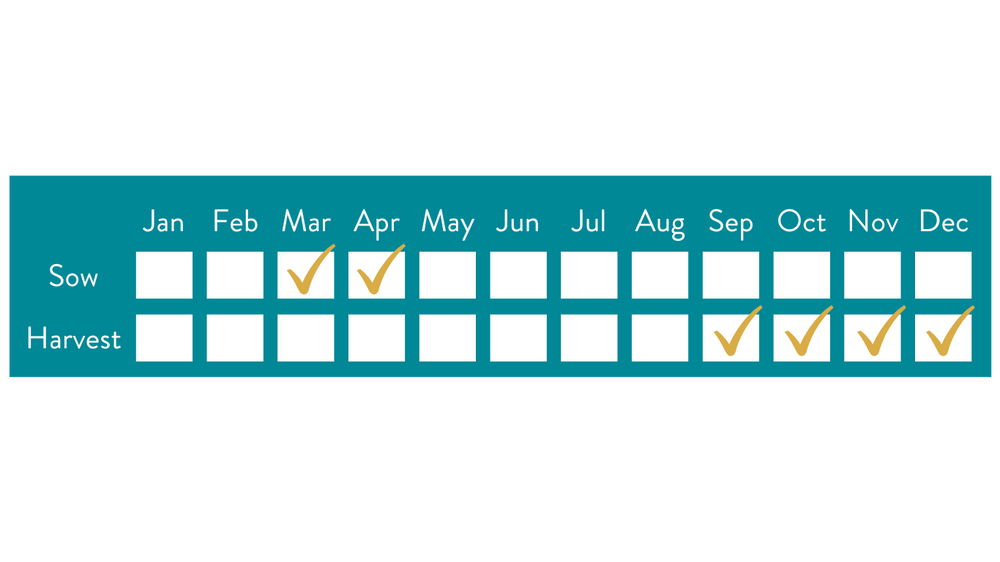
Video Guides
Need to build a raised bed? Or maybe you're battling those pesky slugs. We've got videos filled with easy and practical tips to help you in your veg patch.

Courses
Learn to grown, cook and eat some of your own food with our courses held at GROW HQ.

Celeriac
Veg Type:
Roots
Growing Location:
Indoors and Outdoors

If you like the taste of celery, but find it a little cumbersome, then celeriac is the vegetable for you. Celeriac has a similar flavour to celery, but is grown for its knobbly, turnip-shaped swollen stem.
As vegetables go, celeriac is ugly as sin, but don’t let that fool you – it tastes delicious. It’s very hardy and stores extremely well. A decent crop of celeriac can see you right through the winter months to late March.
Celeriac is also referred to as knob celery or turnip-rooted celery.
Recommended Variety
- Prinz
Sowing
- Celeriac needs a fertile soil, so add a general fertiliser a week or two before transplanting.
- Celeriac and celery are the only two crops that need to be sown in an open tray and ‘pricked out’ – this is because the seed is very small and slow to germinate.
- Sow the seed in March, inside in a warm place. Scatter seeds thinly on an open seed tray – the seeds should only be lightly covered with soil, as some light is required for germination.
- When the seedlings are about 2cm high they need ‘pricking out’ – this means they are carefully transferred to a small pot or module. To do this gently hold the seedling by the leaf and loosen the soil with a knife or seed label and pull out the young plant. Make a hole in the new pot with your knife, drop the seedling in and then gently firm the soil.
Growing
- About four weeks after ‘pricking out’, seeds should be ready for transplanting – plants should be around 10-15cm high.
- Plant out at least 30cm each way and further apart for larger roots.
- Water well in dry periods.
Harvesting
- Celeriac is ready for harvesting from October onwards.
- The easiest way to harvest is to carefully cut the roots off just below soil level with a large, sharp knife – the roots can be left in the soil to decompose.
- Celeriac can be left in the ground, although if they start getting damaged by slugs and insects, or heavy frost is forecast, they should be lifted and stored in sand.
TIPS
- In summer pick off the outer leaves on the top of the bulb – this will encourage the bulb to swell.
- Spread a mulch around the plants in summer to preserve moisture in the soil.
Problems
- Slugs can badly damage the roots. Keep the plot weed free over the growing season and use less toxic slug pellets, like iron phosphate pellets, if slug numbers are getting too high.
- Root fly can be a nuisance, but they generally only tunnel into the base of the roots, which can easily be cut away after harvesting.
Our food system is broken and at GIY we believe that nurturing a real connection to where our food comes from is the key to fixing it.
We're on a mission to inspire a global movement of food growers, one GIYer at a time.
Sign up to be the first to hear about all things GIY.













